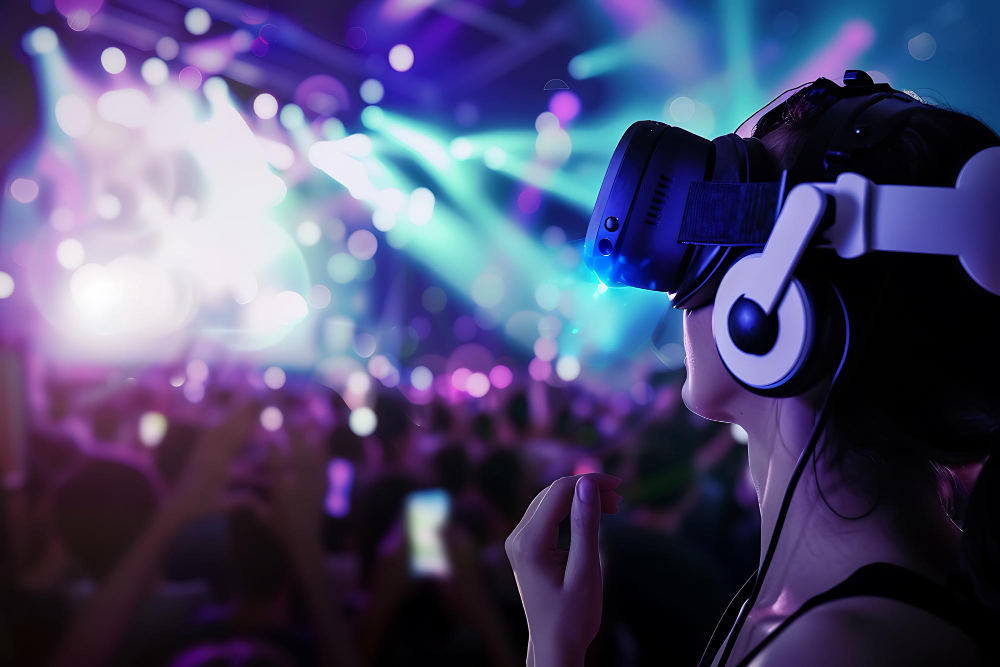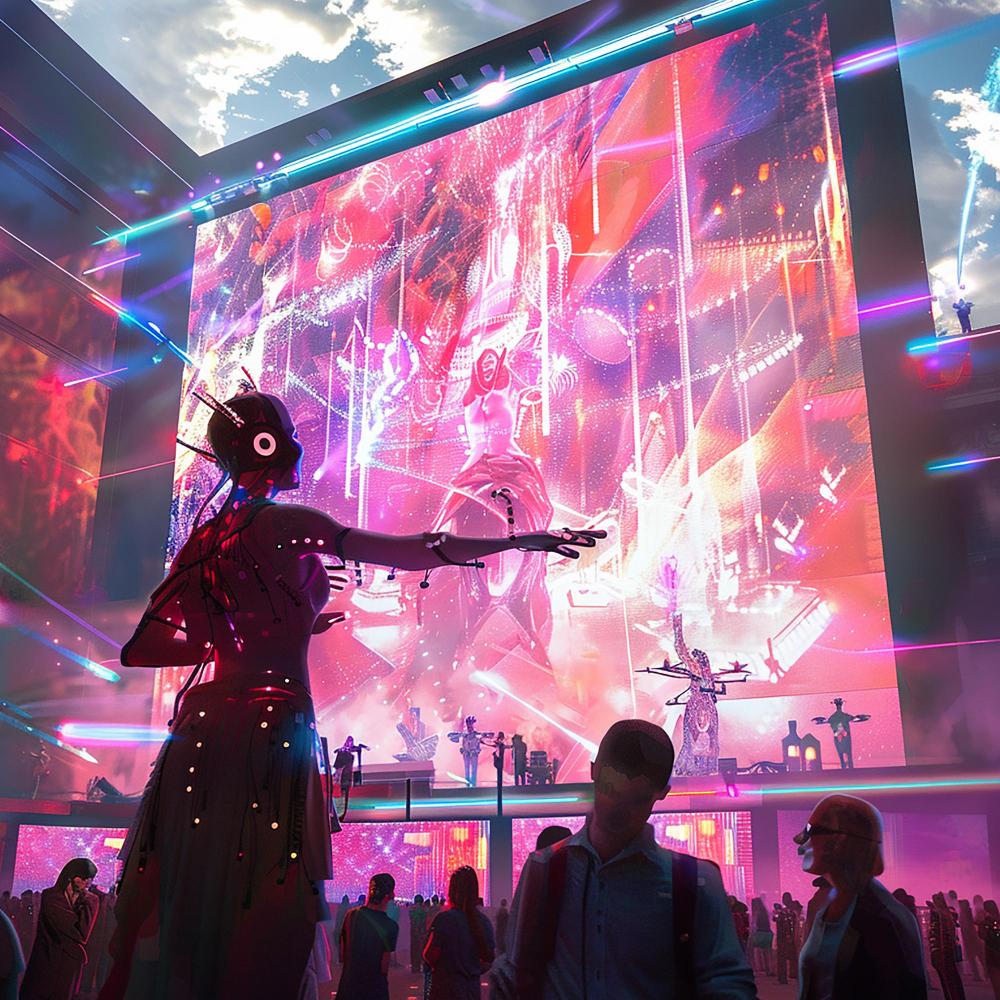Virtual Reality (VR) has revolutionized the way we experience entertainment, and one of the most profound impacts has been on the world of theater. VR immersive theater blends the traditional art of performance with cutting-edge technology, creating experiences that engage the audience like never before. This merging of technology and storytelling offers an unprecedented level of interactivity and presence, changing how audiences perceive and participate in live performances.
What is VR Immersive Theater?
VR immersive theater is an innovative form of storytelling where viewers don a VR headset and become part of a virtual performance. Unlike traditional theater, where the audience remains passive observers, VR immersive theater places them within the scene itself. Participants can look around a 360-degree space, interact with elements in the virtual environment, and sometimes even influence the outcome of the narrative.
The concept is designed to heighten the feeling of presence, a psychological state where the user feels truly “inside” the VR experience. By merging visual, auditory, and interactive elements, VR immersive theater creates a multi-sensory journey that bridges the gap between the audience and the stage.
The Components of VR Immersive Theater
- Virtual Environments: VR immersive theater relies on the creation of detailed, lifelike settings that allow the audience to feel transported. These environments are built using game engines like Unreal Engine and Unity, which enable developers to craft realistic, interactive worlds.
- Actors and Performances: Some VR immersive theater productions use pre-recorded performances, while others employ live actors who perform in real-time using motion-capture technology. This real-time interaction adds an element of unpredictability and engagement that can mimic the spontaneity of live theater.
- Interactivity: Unlike watching a standard performance, VR immersive theater often involves some degree of participation from the audience. This could range from exploring the setting at their own pace to making decisions that affect the storyline. Interactivity levels can vary from passive viewing with subtle reactions to fully interactive experiences where the participant plays a pivotal role in the narrative.
- Spatial Audio: Sound design in VR immersive theater is crucial for creating a believable experience. Spatial audio technology allows sound to come from specific directions, enhancing the realism and helping guide participants’ attention throughout the scene.

Examples of VR Immersive Theater Productions
- “The Under Presents”: One of the most innovative examples of VR immersive theater is The Under Presents, produced by Tender Claws. This experience combines live performances with a time-looped narrative, where participants can interact with both actors and objects within a surreal world. The experience offers a mix of scripted and unscripted elements, allowing users to engage with the story in unique ways each time.
- “Virtual Reality Opera”: The English National Opera and other institutions have started to experiment with VR to make opera more accessible and immersive. Through VR, audiences can enjoy front-row experiences or even be “on stage” alongside performers, creating an intimacy that is rarely possible in traditional performances.
- “The Tempest” by The Royal Shakespeare Company: The Royal Shakespeare Company explored VR in their adaptation of The Tempest. Using digital avatars and motion capture, the production brought the magical elements of Shakespeare’s work to life in an interactive, virtual space.
The Impact of VR on the Theater Experience
- Accessibility: One of the key advantages of VR immersive theater is its accessibility. Audiences who may not have the means or ability to attend live theater performances can experience them from the comfort of their own home. This democratization of theater can expand the reach of performances and make them available to global audiences.
- A New Level of Engagement: Traditional theater relies on suspension of disbelief to draw the audience into the story. VR immersive theater removes the barrier of the stage and places the audience directly within the scene, fostering a deeper emotional connection with the characters and plot. This deeper level of engagement can lead to more impactful storytelling and a more memorable experience.
- Creative Possibilities: VR offers unlimited creative potential for directors and playwrights. Settings can be fantastical, characters can defy the laws of physics, and scenes can change instantly. VR provides a playground where the limits are defined only by the imagination of the creators.
- Expanding Roles for Artists: VR immersive theater has created new opportunities for actors, writers, and designers. Actors may need to adapt their performances to be suitable for motion capture and VR, while writers can experiment with non-linear storytelling and branching narratives. Designers are tasked with creating entire worlds, expanding their roles from set decoration to full-scale world-building.
Challenges Facing VR Immersive Theater
- Technical Limitations: While VR technology has advanced, it still has its constraints. High-quality VR headsets can be expensive, and not everyone has access to the necessary equipment. Furthermore, developers must address issues like motion sickness, which can be triggered by certain types of movement in VR.
- Audience Interaction: Not all audience members may be comfortable with the level of interaction that VR immersive theater demands. Some may prefer a passive viewing experience, while others might relish the opportunity to be part of the story. Creators must strike a balance to cater to varying comfort levels and expectations.
- Production Costs: Creating VR content can be costly, requiring significant investment in technology, development, and performance capture. This can be a barrier for smaller theater companies and independent creators who want to explore VR immersive theater.
- Artistic Constraints: The immersive nature of VR can sometimes limit traditional theatrical techniques, such as monologues or asides, which rely on the audience’s singular focus. Directors must find new ways to convey subtleties and emotions that would typically be communicated through close-ups or stage direction.
The Future of VR Immersive Theater
The future of VR immersive theater holds great potential as technology continues to evolve. With advancements in headset comfort, resolution, and mobility, the overall user experience is bound to improve. Additionally, the integration of artificial intelligence (AI) could introduce even more dynamic and adaptive storytelling, allowing VR experiences to respond to user input in real-time in more complex ways.
Hybrid events, where VR participants share space with a live audience, are also on the horizon, bridging the gap between traditional theater and immersive technology. As 5G technology becomes widespread, faster data speeds and reduced latency will make streaming VR content more seamless, encouraging broader adoption.
Moreover, collaborations between tech companies and theater institutions will likely increase as VR becomes a more established medium. This could lead to grants and funding specifically aimed at VR theater productions, allowing for more ambitious projects and inclusive programming.
Conclusion
VR immersive theater has the potential to redefine the traditional boundaries of storytelling and audience engagement. By allowing participants to step into a story and interact with the world around them, VR brings a unique level of immersion that conventional theater cannot replicate. Despite the challenges, the growth of VR technology and its creative applications indicate a promising future for this blend of art and innovation. As more creators experiment with the medium, we can expect VR immersive theater to push the boundaries of how stories are told and experienced.
# What is Ice Staging Asia’s Spatial Web service? Istaging service is a cloud software service that allows you to create the service you want by using VR / META / AR / AI / DATA at once. It is in the form of SaaS, and customers can edit and use it themselves by subscribing to an account, and it also provides a customization service. It is a highly stable service already used by 100,000 global corporate customers, including retail companies (Louis Vuitton / Dior), real estate companies (REMAX / AECOM), exhibitions (CES / TOYOTA exhibition hall), and industries (SAMSUNG / Mercedes-Benz). # Visit the Ice Staging Asia homepage (https://istagingasia.co.kr) to check more information related to VR / META / AR / AI. # Solution / Technology Inquiry: https://istagingasia.com/contact/
# Detailed solution price: https://istagingasia.com/pricing
# Want to see project-specific cases?
*Retail – https://istagingasia.com/project/retail/
*Real Estate – https://istagingasia.com/project/real-estate/
*Industry – https://istagingasia.com/project/industry/
*Education – https://istagingasia.com/project/education/
*Exhibition – https://istagingasia.com/project/exhibition/
*Museum & Gallery – https://istagingasia.com/project/museum-gallery/
*Expo – https://istagingasia.com/project/expo/
*Tour – https://istagingasia.com/project/tour/
